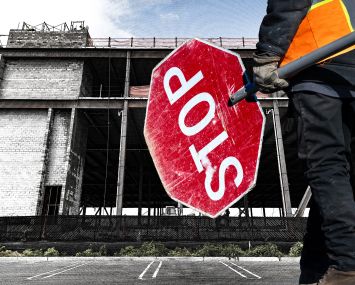 I am frequently asked, “Why build green?” I find the question naïve and slightly exasperating. Besides the ethical and moral imperatives of reversing climate change and conserving natural resources, green buildings are like color televisions or cars with headlights: They are more functional, more enjoyable realizations of the technologies that preceded them. Green buildings are simply better.
I am frequently asked, “Why build green?” I find the question naïve and slightly exasperating. Besides the ethical and moral imperatives of reversing climate change and conserving natural resources, green buildings are like color televisions or cars with headlights: They are more functional, more enjoyable realizations of the technologies that preceded them. Green buildings are simply better.
A green building is an efficient building. It uses energy, water and natural resources efficiently in its design, construction and operation. Most importantly, it is an efficient place for people to work. We don’t build buildings with too few elevators and inadequate air-conditioning. Why would we build buildings that waste energy while depriving occupants of fresh, clean air and daylight? A green building provides a better work environment, and a more pleasant place to work makes for more productive and happier employees.
Real estate ownership is a service business. We provide a product to our customers, and our compensation is based upon the value of that service. A sustainable building is a better product that is worthy of a higher rent. While most Class A office tenants do not obsess over their energy costs, they do appreciate lower operating expenses. And all our tenants worry about their payroll and their workforce. Happy and healthy employees are critical to the success of any business, and even a modest 2 or 3 percent increase in productivity can translate into a significant boost in revenue. It is a competitive advantage to lease a green building; soon it will become an imperative.
Green buildings are more expensive to build. But like many higher-value products, they are worth it, as much of the additional cost is recouped by operating efficiency and durability. As long as a green feature adds value either by generating operational savings or by making the space more marketable, it is a prudent investment.
The exercise of parsing out the specific costs of individual green features as compared with constructing and operating the building without them is time-consuming and of little value. Each building and project is different, and the cost of installing a co-generation plant in one building might be significantly higher or lower than constructing it in another. The use of a building, its location and its size all have to be controlled to make direct comparison valuable. In New York, such analysis is difficult, if not impossible. Environmental features—a micro-turbine, local sourcing of materials or an energy-efficient curtain wall—must be considered as necessary to a building’s success as conventional amenities such as air-conditioning, messenger centers and loading docks.
Building green is easier then retrofitting green, but new construction makes up only a tiny fraction of New York’s building stock. Retrofitting an existing building is extraordinarily complex, and variation in use, design and age of the city’s building stock makes one-size-fits-all solutions unrealistic. There are some easier fixes—increasing insulation and updating underperforming heating and cooling systems, for example. Smaller buildings should be targeted for retrofitting because they have simpler mechanical systems that can be more easily upgraded, and, with less capacity to share heating and cooling resources, they are more wasteful of energy.
Government intervention in this area is, unfortunately, necessary. Upgrading the performance of the existing building stock can be accomplished only through a combination of incentives and regulation. The process must be managed with a deft touch and implemented with the cooperation of the industry. Regulation that is poorly crafted and forces buildings into uneconomical renovations will lead to higher operating costs and possibly litigation.
Building and retrofitting green is not a question of why, but of how. It’s time to dispense with the discussion of the merits of sustainable buildings, and move on to figuring out the most effective and efficient ways to build the best possible building.
Douglas Durst is co-president of the Durst Organization and a member of REBNY’s Executive Committee.


